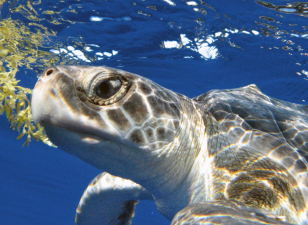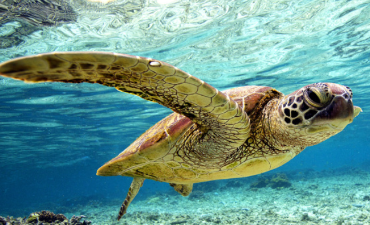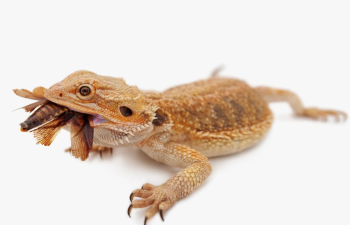June 16th of every year is a day to call on humans to pay attention to the importance of sea turtles - World Sea Turtle Day!


June 16th of every year is a day to call on humans to pay attention to the importance of sea turtles - World Sea Turtle Day!
Sea turtles are a general term for large species of the order Testudinata that live in the ocean. They are very ancient reptiles on Earth and are widely distributed in the world's oceans except the Arctic Ocean. The ancestors of sea turtles that appeared about 120 million years ago survived the asteroid impact at the end of the Cretaceous period 66 million years ago and are called "living fossils." But today, sea turtles are facing unprecedented risks to their survival. Sea turtles face many challenges from birth. In addition to being chased and intercepted by many predators, the survival of sea turtles is also threatened by human activities such as fishery bycatch, legal hunting, illegal poaching, climate change, coastal zone development, marine pollution, and plastic problems. The adult rate is only one in a thousand.

According to the latest assessment by the World Conservation Union (IUCN), of the seven species of sea turtles in two families and six genera that exist to date, except for the flatback turtle (Natator depressus) which has no specific rating due to lack of scientific data, the remaining six species are all threatened: the vulnerable level (VU) includes the loggerhead turtle (Caretta caretta), the Pacific ridley turtle (Lepidochelys olivacea), and the leatherback turtle (Dermochelys coriacea); the endangered level (EN) includes the green turtle (Chelonia mydas); the critically endangered level (CR) includes the Kemp's ridley turtle (Lepidochelys kempii) and the hawksbill turtle (Eretmochelys imbricata).
Solving the bycatch problem
Among the various threats brought by humans, unsustainable fishing activities are the main "black hands" that have hit the sea turtle population. Sea turtles often gather in the same area with commercially valuable fish, so they are easily caught as non-target species. Even though they have a strong breath-holding ability and adaptability to the marine environment, as reptiles that breathe with lungs, once turtles are entangled in trawl nets, gillnets, or hooked by fishing hooks, their desperate struggle will cause them to quickly deplete their oxygen reserves and they are very likely to drown in a short time or even minutes. Moreover, even if they are rescued, a released turtle will usually leave a hook in its chin, throat or stomach. According to statistics, the main cause of turtle death in the past 50 years is the bycatch of turtles by commercial fishing such as shrimp trawls, gillnets and longline fishing. Among them, loggerhead turtles and leatherback turtles are the main victims of longline fishing bycatch. It is regrettable that the largest turtle recorded, a male leatherback turtle weighing nearly one ton (907 kg), was entangled in fishing lines and washed up on the coast of Wales after death. Faced with the serious threat posed by bycatch, all sectors that care about turtles continue to work hard to find solutions to the problem of turtle bycatch, and some technological innovations are bringing new hope.
According to a survey conducted by the World Wildlife Fund (WWF) in the Eastern Pacific, circle hooks have the effect of reducing bycatch in different longline fisheries. Although different types of circle hooks have different effects on reducing bycatch, and the effects on different turtle species (Pacific ridley and green turtle) are slightly different, in general, circle hooks are effective in reducing turtle bycatch - because circle hooks are less likely to be swallowed than J-hooks. After that, the Ecuadorian government was inspired by this study and abolished the import tariff on circle hooks, accelerating the elimination of J-hooks by encouraging the widespread use of circle hooks. At present, nearly 700 fishing vessels in nine countries in the Eastern Pacific have eliminated J-hooks in longline fisheries and switched to circle hooks.

In addition, in the United States, the Turtle Excluder Device (TED) is another widely studied and applied bycatch reduction device. The National Oceanic and Atmospheric Administration (NOAA) fisheries authorities have mandatory requirements for the installation of turtle escape devices in shrimp trawl fisheries in the southeastern coastal states and the Gulf of Mexico. With this device installed on the shrimp trawl, turtles can escape through the trap-door by relying on their weight while retaining the captured shrimp. Of course, regulations to reduce bycatch are not limited to mandatory turtle escape devices, but also include other measures such as gear modification and regional fishing moratoriums. These measures are widely used in offshore longline fisheries, West Coast drift net fisheries, and East Coast set net and drift net fisheries.



